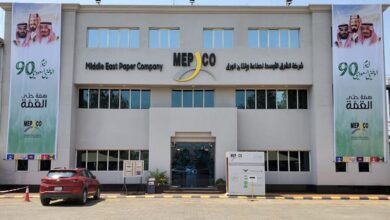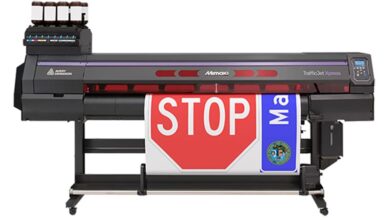
As the whole world is watching the painful events unfold in Ukraine, over a hundred major companies have closed shop in Russia as a mark of protest against the now-almost month old Russian invasion.
Igor Agarkov, Publisher of Print Plus magazine and administrator of the social network of printers says, “Printing in Ukraine has developed quite well, especially in the sectors of flexographic printing, and corrugated and carton packaging, while commercial printing, book production, and especially production of self-adhesive labels have developed quite dynamically in the last two years.”
But things seem to have changed dramatically for Agarkov and the printing fraternity in Ukraine in the past few weeks. “With the invasion, many printing houses have suspended their traditional operations and have changed their profile to volunteer activities, producing materials that are more conducive to the war environment,” he adds.
Despite the tough scenario, many Ukrainian printing houses work and even carry out commercial orders whenever possible. The Ukrainian government has also come up with initiatives for private entrepreneurs, including many in the printing industry, who were exempted from some of the taxes in addition to small targeted payments to printing houses. Many in the packaging sector are also doing voluntary service for the Ukrainian armed forces.
But despite the positive spirit, restoring Ukraine’s once flourishing printing and packaging industry, post invasion, is going to be an uphill task. The problems related to personnel and consumables are the most pressing issues, despite a sliver of hope raised by the European Union (EU).
Russia’s invasion of Ukraine has also severely impacted the packaging industry throughout Europe, given the status of Russia and Ukraine as key suppliers of timber as raw material. With exports alone worth over 12 billion euros, the paper and packaging industry will be drastically affected by the crisis.
The war has created instability and unpredictability in trade and business relations between EU and the warring nations, Russia and Ukraine, and to some extent Belarus, with its economic impact still very difficult to assess in the foreseeable future.
The exclusion of Russian banks from SWIFT and the dramatic plunge in the rouble’s exchange rates will lead to far-reaching restrictions on trade between EU and Russia.
As paper and pulp trade flows between EU and Russia are quite large, bilateral trade restrictions could impact EU paper and pulp industry significantly. While most countries in Europe are impacted by the ongoing crisis, those that are severely affected along with their industries include Germany and Sweden, which account for 55% of the EU pulp exports to Ukraine, and Finland representing 54% of all EU exports of paper and board to Russia. Ukraine is a major importer of paper and board from the EU with limited exports, while EU-Russia trade is quite balanced. Restrictions on the trade of wood and wood-based products which could be included in the sanctions by either EU or Russia could substantially harm the paper industry.
Many regions in the EU are heavily dependent on natural gas supplied by Russia. But with the current scenario, availability and pricing might be impacted. As the paper industry is an energy-intensive industry, this could be a matter of concern. With roadmaps set by Net Zero by 2050 and European Green Deal, there will be a further escalation in energy prices and carbon costs.
Literally adding fuel to fire, the war has sent global prices skyrocketing, leading to even higher costs for all modes of transport. Oil and gas prices have soared with the Independent Commodity Intelligence Services (ICIS) reporting that crude oil prices have reached a high not seen for years.
Many companies including German trade fair ground and organizer Messe Dusseldorf, Norwegian carton company Elopak, and Finnish pulp and paper manufacturer Stora Enso have suspended business in Russia as a direct consequence of the Ukranian invasion. The Director of Forest Stewardship Council (FSC) encouraged stakeholders to act against what he called “the violation of the integrity of the whole region and FSC values.” The organization is currently focused on the protection of forests in Ukraine and Russia.
The photo industry is another one that has raised hands together against the invasion. As photojournalists are risking lives to keep the world updated with their pictures from the Russian invasion of Ukraine, other photographers have joined hands to raise funds for humanitarian aid by selling prints of their work, while companies in the photo industry continue to make donations and suspend shipments to Russia.
In the United States, several renowned National Geographic photographers have contributed their prints to the non-profit Vital Impacts with the entire profit donated to Direct Relief, a top-rated international humanitarian charity, currently working to provide medical aid to affected people.
Many companies have come out and done their bit as a sign of protest against the invasion by making donations to humanitarian causes, including Sony Group Corporation, Canon EMEA (Europe, the Middle East and Africa), Fujifilm, Nikon Group, Panasonic Corporation, Skylum, Pixellu, Adobe, Peak Design, and Shutterfly Foundation.




